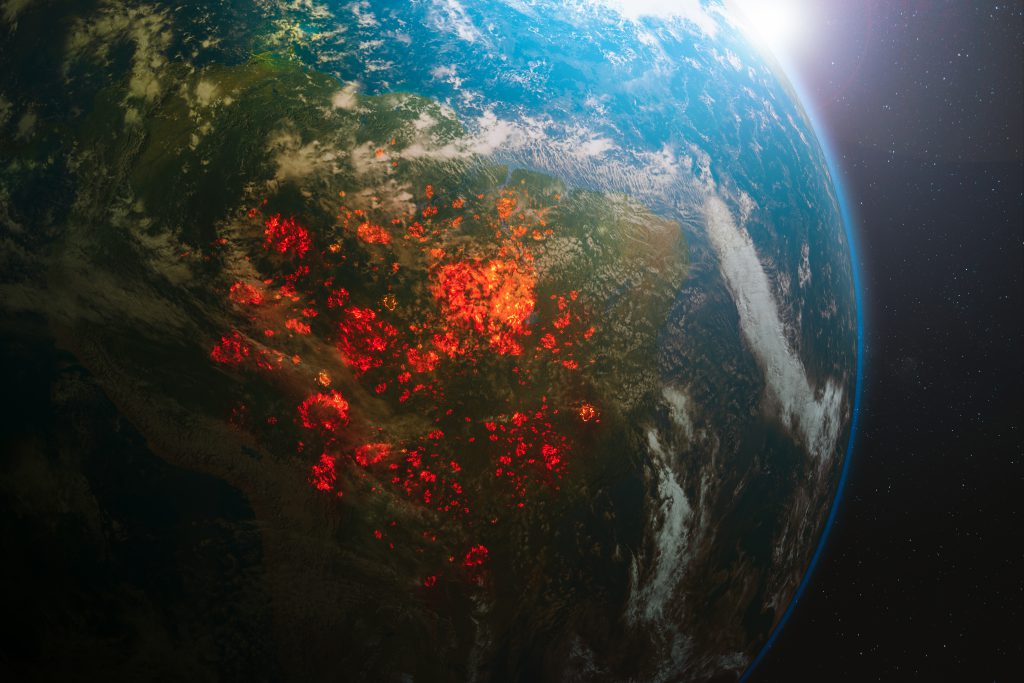Water is an essential right for all, and yet, its importance is often overlooked. For many, the right to water remains a theoretical promise rather than a lived reality. The right to water for children extends beyond mere access to water and refers to safe, sufficient, and affordable water as a fundamental human right, guaranteed by international agreements and national laws.
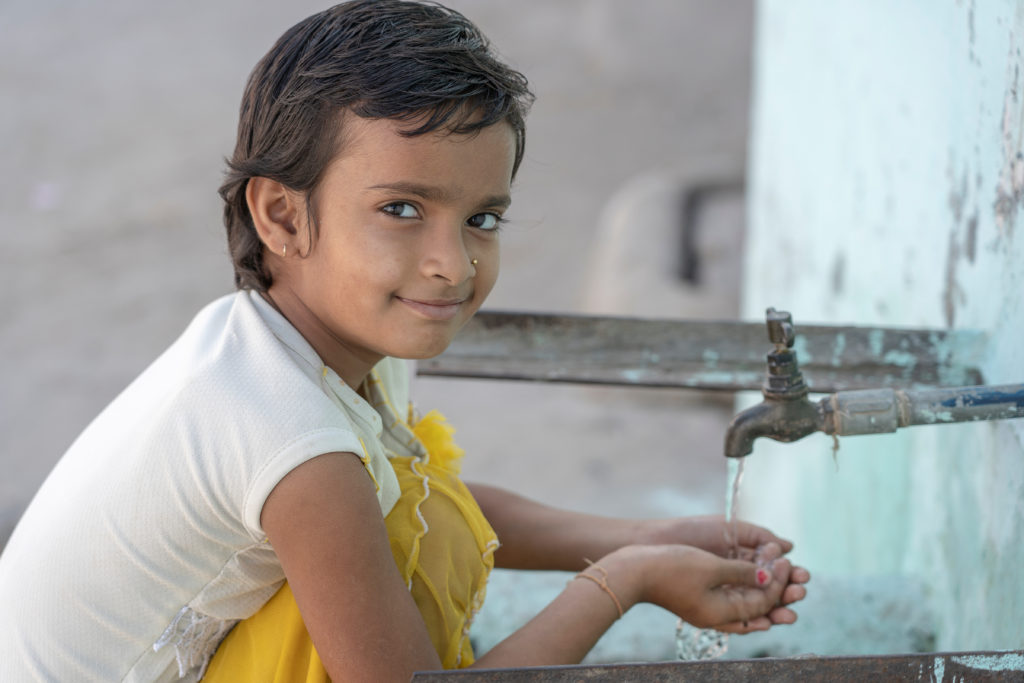
What is the right to water?
The right to water, recognized as a fundamental human right, ensures all individuals are entitled to safe, accessible, and sufficient water for personal and domestic use (United Nations, 2010). For children, this right is critical not only for basic survival but also for their physical health, education, and overall development.
The physical presence of water in a designated area is not enough to consider that people and children’s right to water is guaranteed in practice. The right to water encompasses the following crucial components, without which it cannot be considered that children have safe and adequate access to water:
- Availability: Adequate quantities of water must be available for drinking, cooking, and maintaining hygiene;
- Quality: The water provided must be safe, free from harmful substances and pathogens;
- Accessibility: Water sources must be close to children’s homes, to avoid long and often dangerous journeys that can disrupt education and increase their exposure to physical harm. It must also be affordable to prevent financial strain on families (United Nations, 2010).
Legal frameworks in protecting children’s right to water
International legal framework
Adopted in 1989, the Convention on the Rights of the Child is the most widely ratified treaty focused on child welfare and rights.Article 24 states that children have the right to the highest attainable standard of health and explicitly links clean drinking water and safe sanitation to the prevention of disease and malnutrition. Article 6 of the CRC further emphasizes water’s role in ensuring children’s right to life, survival, and development (UNCRC, 1989).
In addition, General Comment No. 15, issued by the Committee on Economic, Social, and Cultural Rights, elaborates on the right to water, defining water as an elementary life resource and specifying that everyone has the right to sufficient, safe, acceptable, physically accessible, and affordable water for personal and domestic use. It also outlines the most important aspects of this right, including the obligations of governments to ensure non-discrimination, equitable access, and accountability in terms of water management, while at the same time emphasizing the needs of vulnerable groups, including children (CESCR, 2002).
Regional and national legal frameworks
A good example of a relevant regional legal instrument is the African Charter on the Rights and Welfare of the Child (ACRWC), adopted by the Organization of African Unity, later renamed to African Union. This charter reinforces children’s right to water in African countries by adapting global standards to specific regional needs and challenges, including drought, infrastructure issues, and economic limitations.
ACRWC obliges African governments to implement measures to provide safe water, especially in rural and marginalized areas, addressing regional disparities and prioritizing vulnerable populations. Article 14 of the ACRWC focuses on the right to health, obliging the member states to ensure children have access to adequate nutrition, safe drinking water, and proper sanitation as part of their right to the highest standard of health (African Union, 1990).
National laws and policies, such as the USA Safe Drinking Water Act (SDWA), are an additional level of reinforcement of the right to water. Amendments to this particular act emphasize the importance of enabling access to safe drinking water in schools, in that way especially protecting children’s right to water (U.S. Government Printing Office Washington, 2000).
Another great example is India’s Right to Free and Compulsory Education Act, which also stipulates safe drinking water and sanitation facilities as a requirement in schools. Provisions of this act reinforce children’s right to water by ensuring that every school in India has access to safe drinking water and adequate sanitation, aiming to support children’s health and educational attendance (IndiaCode, 2009).
Challenges to children’s access to safe water
According to the World Health Organization, in 2020 approximately one in four individuals did not have access to safely managed drinking water in their homes. This statistic encompasses millions of children (World Health Organization, 2021). Reasons behind these staggering numbers vary from natural causes to human-caused pollution.
Water scarcity and pollution
Water scarcity, driven by factors such as climate change, over-extraction of water resources, and constant population growth, limits access to safe water for drinking, sanitation, and hygiene. It also causes or worsens issues such as sewage failures which can further cause outbreaks of waterborne diseases.
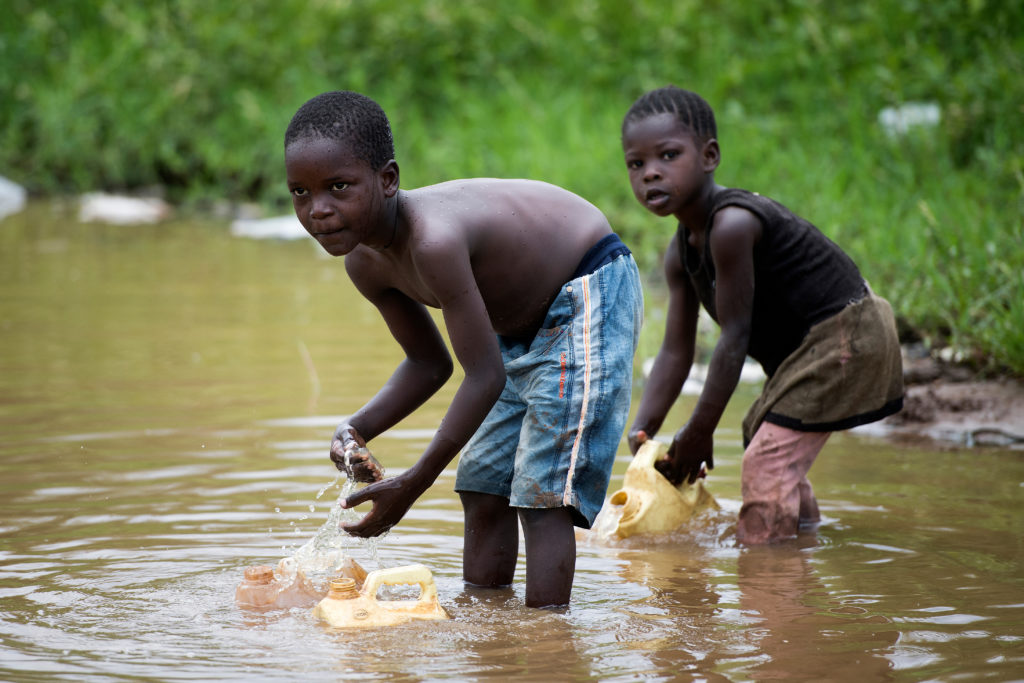
Additionally, pollution from industrial waste, agricultural runoff, and urbanization introduces harmful chemicals, heavy metals, and pathogens into water sources, while contamination from untreated sewage and poor sanitation further worsens water quality. For children, exposure to unsafe water sources increases the risk of already mentioned waterborne illnesses, which are leading causes of child mortality in low-income regions (World Health Organization, 2024).
Impact of climate change
Climate change affects water sources globally, with particularly severe impacts on vulnerable communities already facing environmental and socioeconomic challenges. Rising global temperatures accelerate evaporation of water from lakes, rivers, and reservoirs, reducing water availability and worsening droughts, especially in regions already facing significant water scarcity.
Rising temperatures also cause glaciers to melt at an accelerated rate, reducing a major freshwater source for millions living downstream who depend on seasonal glacier melt for drinking water and agriculture (IPCC, 2022). Floods and storms, intensified by climate change, further strain water sources by contaminating them with pollutants, sewage, and agricultural runoff, leading to health hazards in communities with limited infrastructure.
Socioeconomic barriers
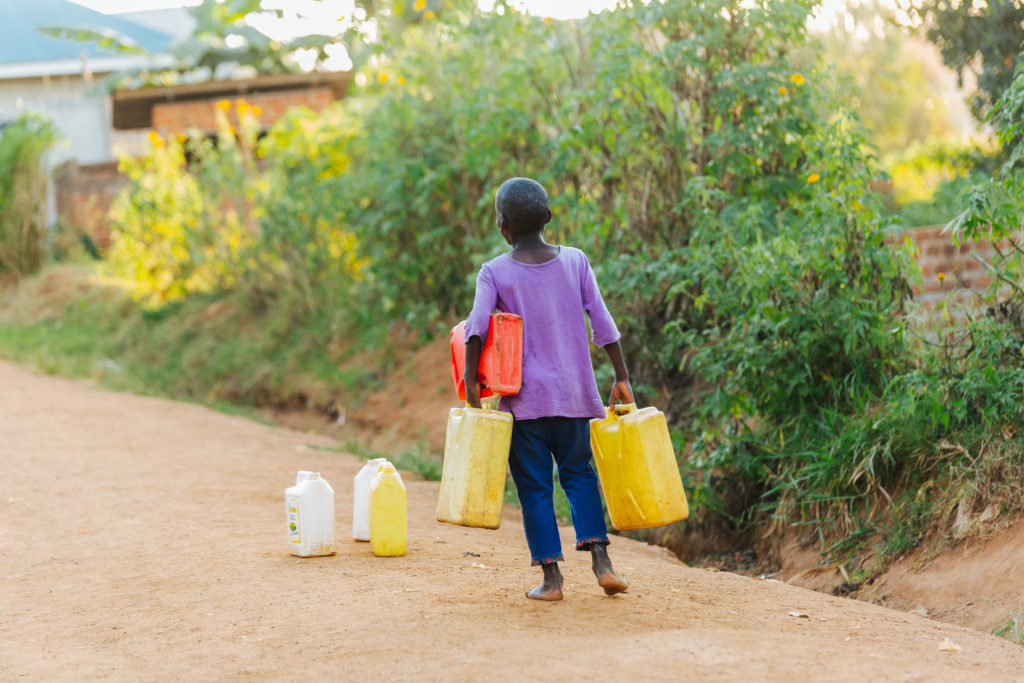
Socioeconomic factors, particularly poverty and underdeveloped infrastructure, are significant barriers to water security for children. Limited access to safe water worsens these issues, creating a cycle of poverty and poor health. In many regions, poverty restricts access to safe water, with households unable to afford water purification tools or safe sources. Children often bear the burden, spending time fetching contaminated water, which affects their education and well-being (Asian Development Bank, 2006; Fontana, 2022).
Sub-Saharan Africa, a region in which, as estimated, 35% of the population lives in extreme poverty, paints a clear picture of the mentioned link between poverty and the endangered right to water (Baah & Lakner, 2003). Overall, only 39% of the population has access to safe water within their homes, while in rural areas the percentage drops to 19%. The situation is especially difficult in the Democratic Republic of Congo, one of the poorest countries in the world, where only 1% of the rural population has access to water within their households (Fontana, 2022).
Vulnerable groups
Certain groups are especially vulnerable to the lack of safe water. Indigenous communities in Canada, for example, face significant disparities, with many living under long-term water advisories, some for over 25 years. These communities experience higher rates of hygiene-related illnesses, economic strain, and erosion of cultural connections due to contaminated water sources (Black & Swampy, 2021; Liao, 2020; Yenilmez, n.d.). Similarly, children in war zones like Yemen are particularly vulnerable as conflict damages infrastructure, escalating water shortages and leading to health crises such as cholera outbreaks (Herzer Risi & Greenbaum, 2024).
Impacts of inadequate access to water on children
Risks for the right to health
Access to safe water is necessary for preventing diseases and supporting nutritional needs, both crucial for children’s health. Unsafe water can cause waterborne diseases such as diarrhea, cholera, dysentery, trachoma, skin infections, and many others. It is worth mentioning that diarrhea is the third-leading cause of death in children 1 to 5 years of age (World Health Organization, 2024).
Risks for the right to education
Diseases caused by the lack of safe water, combined with the mentioned fact that children, most frequently girls, are usually the ones responsible for bringing water to their homes from distant water sources, pose a significant threat to children’s right to education. From temporary absences from school to permanent dropouts, inadequate access to water can cause severe consequences in this regard.
Risks for the right to life in dignity
The right to life in dignity is also severely affected. Children without sufficient water access often live in unsanitary living conditions, unable to properly maintain their personal hygiene. This lack of hygiene contributes to social stigmatization and psychological distress, especially when it comes to girls, reducing children’s sense of self-worth and dignity (Jaafar et al., 2023). In addition, chronic exposure to waterborne diseases and malnutrition undermines physical and mental well-being, trapping children in cycles of poverty and illness that prevent them from achieving their full potential.
Risks for the right to food
Water scarcity also jeopardizes the right to food , as agricultural productivity is heavily dependent on sufficient water supplies. In water-scarce regions, droughts and inadequate irrigation infrastructure devastate crops and livestock, leading to food shortages, higher prices, and widespread malnutrition. Somalia, southern and south-eastern Ethiopia, and northern and eastern Kenya are only some examples of countries where the lack of water and infrastructure necessary for irrigation combined with droughts has led to food insecurity (ReliefWeb, 2023).
States, international, and individual obligations
State obligations
On the path towards guaranteeing the right to water to children in practice, governments hold great responsibility. In order to ensure that all children within their countries’ population have access to safe and sufficient water governments must:
- Implement policies that guarantee affordable, reliable access to clean water and sanitation facilities in homes, schools, and healthcare centers.
- Invest in water infrastructure, especially in rural areas where access to safe water may be limited. This investment includes building and maintaining water pipelines, purification systems, and safe sanitation facilities, which can prevent waterborne diseases and improve public health.
- Enforce national and international regulations that protect natural water sources from pollution and over-extraction, ensuring sustainable water management for current and future generations.
International obligations
With the mutual goal to ensure safe, accessible and affordable water to all individuals, and especially children, the international community must:
- Work collaboratively on addressing water scarcity, pollution, and infrastructure deficiencies.
- Share resources, knowledge, and best practices for ensuring water security.
- Uphold relevant legal instruments that mandate the international community to ensure that children’s right to water is guaranteed in practice , such as:
- United Nations Convention on the Rights of the Child, enshrining the right to health, which includes access to safe drinking water and adequate sanitation.
- General Comment No. 15, issued by the Committee on Economic, Social, and Cultural Rights, defining water as an elementary life resource that everyone is entitled to (CESCR, 2002).
Individual and community responsibilities
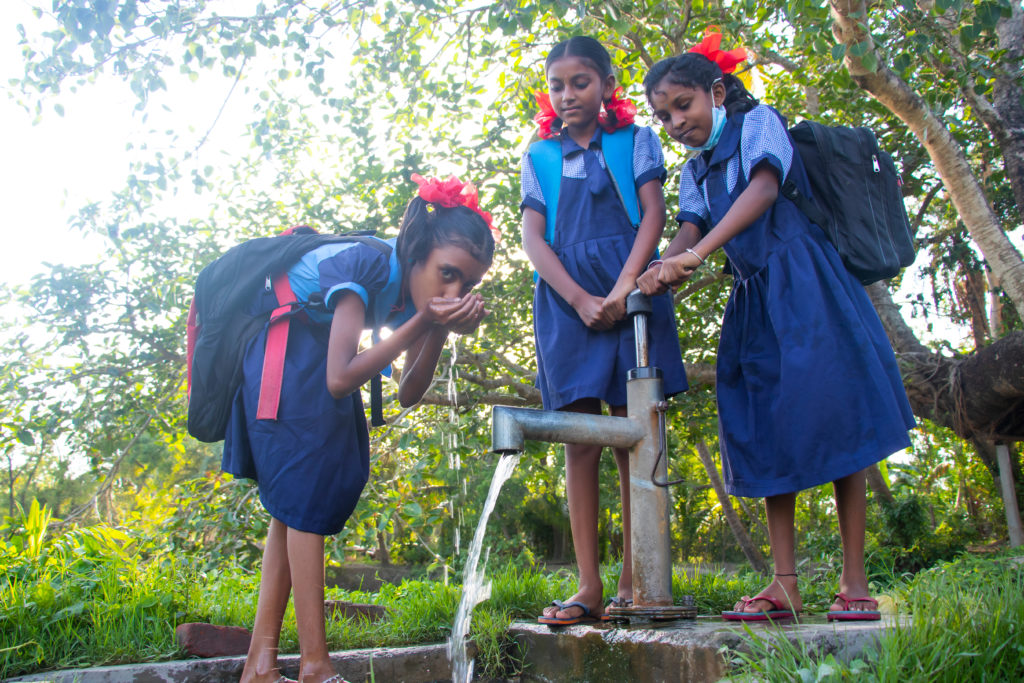
Individual actions and community initiatives can advocate for children’s right to water and promote sustainable water use. Recommended ways for individuals and communities to contribute and get involved are to:
- Organize and participate in grassroots movements that can push for policy changes and infrastructure improvements that prioritize safe water access for children.
- Organize and participate in community-led projects like enabling local water purification systems, rainwater harvesting, and sanitation training.
- Raise public awareness and educate communities about water conservation, protection of natural water sources, and advocacy for effective water policies.
Written by Zeljka Mazinjanin
Internally proofread by Aditi Partha
Last updated on November 21, 2024
Bibliography:
African Union (1990), African Charter On The Rights And Welfare Of The Child. retrieved from African Union, available at https://au.int/sites/default/files/treaties/36804-treaty-african_charter_on_rights_welfare_of_the_child.pdf, accessed on October 30, 2024.
Asian Development Bank (2006), Water and Poverty. Retrieved from Asian Development Bank, available at https://www.adb.org/sites/default/files/publication/28859/water-brief-water-and-poverty.pdf, accessed on November 1, 2024.
Baah, Samuel Kofi Tetth & Lakner, Christoph (2023), Fragility and poverty in Sub-Saharan Africa: two sides of the same coin. Retrieved from World Bank Blogs, available at https://blogs.worldbank.org/en/opendata/fragility-and-poverty-sub-saharan-africa-two-sides-same-coin, accessed on November 1, 2024.
Black, Kerry & Swampy, Mario (2021), Tip of the iceberg: The true state of drinking water advisories in First Nations.Retrieved from University of Calgary, available at https://ucalgary.ca/news/tip-iceberg-true-state-drinking-water-advisories-first-nations, accessed on November 1, 2024.
CESCR (2002), General Comment No. 15. Retrieved from United Nations Digital Library, available at https://digitallibrary.un.org/record/486454?v=pdf, accessed on October 29, 2024.
E. Robson, G. Porter, K. Hampshire And A. Munthali (2013), Heavy loads: children’s burdens of water carrying in Malawi. Retrieved from JSTOR, available at https://www.jstor.org/stable/24686870, accessed on October 30, 2024.
Herzer Risi Lauren & Greenbaum Elanor (2024), The Global Challenge of Water’s Weaponization in War: Lessons from Yemen, Ukraine, and Libya. retrieved from NewSecurityBeat, available at https://www.newsecuritybeat.org/2024/03/the-global-challenge-of-waters-weaponization-in-war-lessons-from-yemen-ukraine-and-libya/, accessed on November 21, 2024.
IndiaCode (2009), The Right Of Children To Free And Compulsory Education Act. Retrieved from IndiaCode, available at https://www.indiacode.nic.in/bitstream/123456789/19014/1/the_right_of_children_to_free_and_compulsory_education_act_2009.pdf, accessed on October 30, 2024.
IPCC The Intergovernmental Panel on Climate Change (2022), Special Report on the Ocean and Cryosphere in a Changing Climate: High Mountains. Retrieved from IPCC, available at https://www.ipcc.ch/srocc/chapter/chapter-2/, accessed on November 1, 2024.
Jaafar Hafiz, Suraya Yasmin Ismail, Amirah Azzeri (2023), Period Poverty: A Neglected Public Health Issue. Retrieved from National Library of Medicine, available at https://pmc.ncbi.nlm.nih.gov/articles/PMC10372806/, accessed on November 1, 2024.
Liao Kristine (2020), 61 Indigenous Communities in Canada Still Face Water Crisis. Retrieved from Global Citizen, available at https://www.globalcitizen.org/en/content/canada-indigenous-drinking-water-dangers/, accessed on November 21, 2024.
Pedro Arrojo Agud (2022), Climate change and the human rights to water and sanitation Special Thematic Report 1: Outlining the impacts of climate change on water and sanitation around the world. Retrieved from United Nations, Human Rights, Office of the High Commissioner, available at https://www.ohchr.org/sites/default/files/2022-01/climate-change-1-friendlyversion.pdf, accessed on November 1, 2024.
ReliefWeb (2023), Horn of Africa Drought Regional Humanitarian Overview & Call to Action. Retrieved from ReliefWeb, available at https://reliefweb.int/report/ethiopia/horn-africa-drought-regional-humanitarian-overview-call-action-revised-26-may-2023, accessed on November 1, 2024.
UNCRC (1989), The United Nations Convention on the Rights of the Child. retrieved from United Nations, Human Rights, Office of the High Commissioner, available at https://www.ohchr.org/en/instruments-mechanisms/instruments/convention-rights-child, accessed on October 29, 2024.
United Nations (2010), About water and sanitation. Retrieved from United Nations, Human Rights, Office of the High Commissioner, available at https://www.ohchr.org/en/water-and-sanitation/about-water-and-sanitation, accessed on October 29, 2024.
U.S. Government Printing Office Washington (2000), The Safe Drinking Water Act As Amended By The Safe Drinking Water Act Of 1996. Retrieved from U.S. Government Publishing Office, available at https://www.govinfo.gov/content/pkg/CPRT-106SPRT67528/pdf/CPRT-106SPRT67528.pdf, accessed on October 30, 2024.
World Health Organization (2021), Billions of people will lack access to safe water, sanitation and hygiene in 2030 unless progress quadruples – warn WHO, UNICEF. Retrieved from World Health Organization, available at https://www.who.int/news/item/01-07-2021-billions-of-people-will-lack-access-to-safe-water-sanitation-and-hygiene-in-2030-unless-progress-quadruples-warn-who-unicef, accesses on October 30, 2024.
Fontana, Gilbert (2022), Low water accessibility in Sub-Saharan Africa means children are having to go to wells instead of to school. How big is the problem? Retrieved from World Economic Forum, available at https://www.statista.com/statistics/1228533/number-of-people-living-below-the-extreme-poverty-line-in-africa/, accessed on November 1, 2024.
World Health Organization (2024), Diarrhoeal disease. Retrieved from World Health Organization, available at https://www.who.int/news-room/fact-sheets/detail/diarrhoeal-disease, accessed on November 1, 2024.
Yenilmez Sena (n.d.), Impacts of unsafe drinking water on Indigenous reserves. Retrieved from The Indigenous Foundation, available at https://www.theindigenousfoundation.org/articles/impacts-of-unsafe-drinking-water-on-indigenous-reserves, accessed on November 21, 2024.

